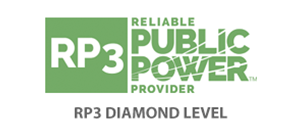Home Safety
A basic understanding of how electricity works is critical to keeping your home's electrical system in safe working order.
How Electricty Works
A basic understanding of how electricity works is critical to keeping your home's electrical system in safe working order. Electricity enters your home through a service head, from a network of outdoor power lines or an underground connection.
Standard Volts & Circuits
A typical service head consists of two 120-volt wires and one neutral wire. The 120-volt circuits use one phase of the electrical service to power most home appliances. Some appliances - usually larger devices such as water heaters, dryers, electric ranges, electric vehicle charging stations, etc., require a 240-volt circuit. This is created using both 120-volt wires and the neutral wire.
Meter & Service Panel
The electric meter measures how much electricity is being used in your home. Tampering with the meter is not only extremely dangerous but also illegal. The electrical service panel is the central distribution point for delivering electricity to outlets, appliances and light switches throughout the house. It's usually located near the meter and is equipped with fuses or breakers that shut off the flow of electricity if a problem occurs. When you call to report an outage, you may be asked if you've checked your breakers.
Grounding
Grounding is a method used as protection for humans, appliances and the electrical system itself in the event of a short circuit or overload. Grounding calls for using a wire to connect the electrical system to the earth. Since electric currents are always looking for the quickest path to ground, grounding provides a path that could otherwise be provided by appliances, equipment or the person who's working on the system.
Inside Your Home
Do it Yourself Jobs
Electrical Safety Foundation International strongly recommends hiring a licensed electrician to perform any electrical work in your home. If you decide to handle the project on your own, please consider these safety tips:
- Learn as much as possible about your home's electrical system beforehand.
- Know your limits: Never attempt a project that is beyond your skill level. Unplug any appliance before starting work.
- Shut off power to the circuit you'll be working on by switching off the breaker in the main service panel.
- Test the wires before you touch them to ensure they're not energized.
- Never touch plumbing or gas pipes when working on your home's electrical system.
Space Heaters
According to the National Fire Protection Association, heating equipment is a factor in 57,100 home fires, 490 deaths, 1,530 injuries and $1.1 billion in property damage in the US each year. The majority of these incidents were caused by portable space heaters.
Tips
Knowing how to safely use a space heater can save your life. The first step is to read the owner's manual. Here are some other tips:
- Never leave a space heater running when you leave a room or go to sleep.
- Do not use space heaters in rooms with unsupervised children.
- Keep space heaters at least 3 feet from anything flammable - furniture, clothes, bedding, rugs, curtains, etc.
- Don't put a space heater in a high-traffic area where people might run into it or trip over it.
- Set up the heater on a flat and level surface. Avoid placing it on furniture.
- Do not use a space heater in damp or wet areas, bathrooms included, unless the manual indicates the heater is intended for bathroom use.
- Do not plug a space heater into a power strip or extension cord.
- Unplug the space heater when it's not on, and inspect the cord regularly for damage.
Smoke Alarms
A working smoke alarm in your home cuts your chance of dying in a home fire by 50%.
Tips
Use these tips when purchasing and maintaining a smoke alarm:
- Purchase smoke alarms from reputable retailers. Choose alarms that have the label of a recognized testing laboratory.
- Have working smoke alarms on every level of your home, outside each sleeping area, and inside each bedroom. Interconnected alarms offer the best protection.
- Regularly check your smoke alarms by hitting the Test button. Test the device at least once a month, and replace batteries at least once a year.
- Replace the device every 10 years, at least.
Portable Generator Safety
In the event of a prolonged power outage, portable electric generators can provide benefits and convenience - powering heat sources, lights, computers, phones, etc. They can also be very dangerous.
Here are some precautions to take to ensure the safety of you and your family, as well as the safety of those working to restore the power:
- Make sure you fully understand how to properly operate the generator. The most effective way to do so is to read and follow the manufacturer's operating instructions.
- Only use a generator outside, away from open windows, doors and vents.
- Never use a generator inside a confined space - your home, garage, crawl space, etc. The carbon monoxide emitted by the machine can be deadly even if you've opened doors or windows.
Prevent Carbon Monoxide Exposure
For information about carbon monoxide exposure, please view the information provided by Intermountain Gas.
Outside Your Home
Tree Trimming
IFP will temporarily cut power to the property at no charge during business hours, in order for you to safely trim or remove any tree or limb in contact with the secondary line. Visit here for more information about tree trimming.
Call Before You Dig
Make sure you call 811 at least two working days breaking ground on your property, whether you plan to dig a garden, install a fence or sprinkler system, plant trees. You could be hurt or killed by coming into contact with underground utility lines, in addition to being held financially liable for any damage caused.
Visit Digline for more information or to request locate service on your property.









